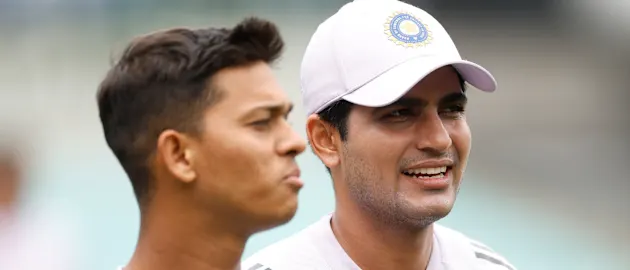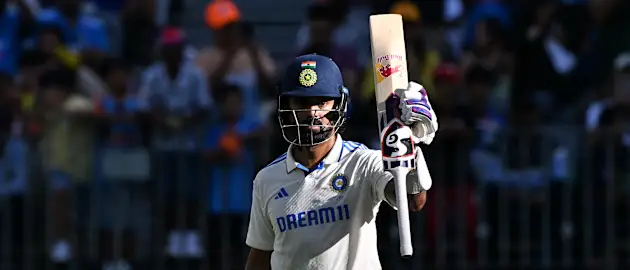On Gill’s to-do list as India’s next Test skipper
Appointed as India’s new Test captain ahead of the tour of England, Shubman Gill will seek to rebuild India’s fortunes in the longest format.

With a leadership change inevitable following the retirement of skipper Rohit Sharma from Test cricket earlier in May, the task of leading India into their new Test era falls on Shubman Gill.
The 25-year-old becomes India’s youngest full-time Test skipper since Sachin Tendulkar led the side at the age of 23 in 1996. Like Tendulkar, who took the reins of the side after a series of underwhelming results, Gill assumes command of the team in trying times.
India had their first series loss at home in 12 years towards the end of 2024 against New Zealand, followed by a comprehensive defeat in Australia despite a positive start. Given this, the side failed to make it to the ICC World Test Championship 2025 Final, the first time it has not been able to do so since the inception of the tournament.
We look at the challenges that Gill will look to address as he seeks to rebuild India’s Test fortunes:
No. 4 conundrum
For the last three decades, India had little to worry about the crucial No. 4 batting spot in Tests.
First, Sachin Tendulkar and then Virat Kohli thrived at the position, scoring a cumulative 21056 Test runs for India with 70 tons during their time at No. 4.
With the latter’s recent retirement, India will need another batter to raise his hand and make the key position their own for the coming years.
Several contenders line up, but it remains to be seen which way the team management goes.
There's a possibility that skipper Gill takes over as number four, a role similar to Kohli, holding the side’s middle-order defence while having the strokeplay to turn the game around.
Virat Kohli on guiding Shubman Gill to achieve his potential | WTC Final
India star Virat Kohli reveals the role he has played in the emergence of opener Shubman Gill ahead of the ICC World Test Championship Final
Rishabh Pant, who scored a sensational 146 in his last outing in England, has been slotted down a bit lower at number five or six in Test cricket, but given Kohli’s departure, can be asked to fill in. The same goes for KL Rahul; should India move to an opening combination featuring Yashasvi Jaiswal and Sai Sudarshan.
Karun Nair, who's making a comeback to the Test squad after seven years, can also slot in the role, having featured in other middle-order roles before.
Search for new spin maestros
Ravichandran Ashwin’s international retirement during the Australia series meant that India’s magical pairing of Ashwin and Ravindra Jadeja, with 587 Test wickets while playing together, was broken.
A big factor of India’s 12-year unbeaten run in Tests at home was the guile and expertise of the off-spin and left-arm spin combo of Ashwin and Jadeja. However, with Ashwin’s departure and the fact that Jadeja is on the wrong side of his 30s means that India will be on the lookout for new leaders in their spin setup.
Kuldeep Yadav (56 Test wickets) and Washington Sundar (25 wickets) will have the immediate burden of carrying India’s spin fortunes along with Jadeja. Other spinners, who haven't been named in the squad for the England series, but can be in contention for future assignments, are all-rounder Axar Patel (55 Test scalps), domestic icon Jayant Yadav, R Sai Kishore or even white-ball specialists Ravi Bishnoi.
Replacing Rohit, Ashwin and Kohli
Beyond the numbers, Ashwin, Kohli, and Rohit have had an important bearing on India’s Test fortunes since the 2010s.
Their experience of playing cricket across conditions will be dearly missed, and unlike the 2008-13 transition of Indian cricket, wherein Anil Kumble (2008), Sourav Ganguly (2008), Rahul Dravid (2012), VVS Laxman (2012), and Sachin Tendulkar (2013) left the side after a certain gap period, the present transition sees India without an experience of 296 cumulative Tests in the space of a series, with the three stalwarts having since stepped down.
India’s new captain and the team management will be hoping to make up for this experience gap at the earliest.
Ravichandran Ashwin announces retirement from international cricket
Ravichandran Ashwin announces retirement from international cricket
Identifying the next leadership group
With the departure of the key senior figures from the side, the core leadership group of team India will undergo changes. The team management along with the skipper will have to identify the core leadership group in the setup.
While in the early 2000s, India’s leadership primarily consisted of senior batters along with Anil Kumble, over the recent years, the bowlers have had a greater say, so one can expect Jasprit Bumrah to play a crucial role in the think tank, with other senior bowlers expected to chip in as well.
Rishabh Pant, the present vice-captain, and KL Rahul, who has led the Test side in the past, are the others who will play a big role in the decision-making apparatus on the field.

India's KL Rahul celebrates reaching his half century during the Perth Test against Australia in December 2024 // Getty Images
Regaining confidence at home
After the tour of England, India’s next two Test assignments are slated to take place at home against West Indies and South Africa respectively.
Generally the favourites at home, the Men in Blue got a rude shock when New Zealand stunned them with a 0-3 series loss in their own backyard. India’s recent years have seen them struggle against spin, including losses to Australia (2017, 2023) and England (2021) on turning tracks at home.
But this was the first-time that they had been whitewashed at home (in a series of three or more games) with Ajaz Patel (15 wickets) and Mitchell Santner (13 wickets) playing a leading role in New Zealand’s triumph.
To regain their confidence in home conditions, India will need their batters to stand up against the opposition tweakers and figure a way to stay at the crease and rotate strike for longer periods of play. India’s bowling attack too will need to fire at full cylinders, so that the team can regain the psychological advantage of home dominance.
